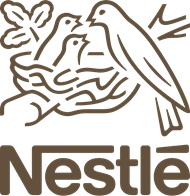From weight loss medication and fertility support to cosmetic and hair loss treatments, the traditional elective healthcare landscape is being radically transformed.
Historically, elective healthcare might have been associated with older demographics or specific medical needs. However, recent insights from CACI’s Voice of the Nation (VOTN) consumer survey reveal a compelling shift: a surge in demand for elective treatments from wellness and image-conscious Gen Z and Millennial consumers.
This fundamental change has profound implications for healthcare providers and their location strategies to ensure they are precisely aligned with the evolving demographics of their target audiences and meet their notably high expectations around convenience, accessibility, and experience. This offers a huge challenge – and opportunity – for healthcare brands to adopt a more agile, data-informed approach to their physical presence.
A complex convergence of health, wellness and beauty consumption
Our Voice of the Nation (VOTN) survey reveals that weight-loss treatments like Mounjaro and Ozempic are projected to grow by 40% in 2025, with Millennials and Gen Z leading the charge. And Gen Z show equal interest among both male and female respondents unlike all other age cohorts, where women predominate.
And while 4.9% of respondents overall say they plan to pay for cosmetic treatments in 2025, this number rises above 10% for Gen Z respondents and female Millennials but remains below 3% for anyone older than 45.
It might be tempting to assume that this trend is purely about aesthetics. And there’s some truth in this. For those planning to increase their beauty spending in 2025, nearly 14.9% planned to pay for cosmetic treatment against 4.9% generally. Similar jumps were seen for hair loss treatment (10.2% versus 3.3% generally) and weight loss services (14.9% against 6.4% generally).
Yet other issues are also in play.
For Gen Z respondents who considered ‘Health’ as a top three issue facing the UK, there was also a distinct increase in planned treatments: 16.2% of Gen Z males concerned about health were planning weight loss treatments versus 9.7% in general, for example.
In addition, when we look at the Voice of the Nation sentiment data through our in-depth Acorn geodemographic segmentation, demand for all types of healthcare treatments spans both affluent and less affluent groups.
Brought together, the data shows there’s a truly complex mix of motivations — from aesthetics and wellness to proactive health management – across and within different age cohorts. But all with the clear underlying message that Millennials and Gen Z with their growing spending power are seriously invested in elective healthcare treatments that make them feel and look better.
Why Traditional Site Selection Falls Short
Historically, location planning in healthcare has relied on broad demographic assumptions or legacy performance data. But in today’s market, that’s not enough, no longer can site selection be based on general market trends. A clinic with the wrong treatment offer, placed in the wrong area – too far from its target audience, or in a location with low footfall – can struggle to gain traction, regardless of the quality of care it offers.
But critically, it’s not just about what these consumers want — it’s about where they are. Something that after Covid-19 has also changed. Traditional assumptions about most people working from the office every day no longer hold. Our VOTN research found that on average people now only spend on average 2.5 days in the office – Gen Z spending 12.5% more time in the office than Gen X and Baby Boomers.
Younger generations are more likely to live in urban centres, commute via public transport, and expect services to fit seamlessly into their daily routines. This is reflected in our VOTN data which finds Gen Z less likely to have products delivered to home and far more likely to have purchases delivered to a pick-up/drop off point like a locker or local convenience store (39% versus 23% in general) or delivered to a convenient location like their office (27% versus 14% in general).
And as we’ve already noted younger generations are also more likely to pay for treatments where the NHS is not offering what they need or on the timescale they want it.
What’s needed is a more granular, predictive approach to location choice: one that considers not just who your customers are, but how they move, spend, and engage with products and services.
A data-driven bespoke approach to Location Strategy
Healthcare treatment providers looking for physical locations that will help them match this complexity of demand and grow their business should be looking to modern location analytics that combine powerful human behavioural and geographical insights. Rather than taking an ‘off-the-shelf’ approach that can obscure what’s really going with the new healthcare consumer, a bespoke approach allows you to:
- Map journey-time decay to understand how far patients are willing to travel for different services
- Define profile catchments using lifestyle segmentation like our CACI Acorn that can leverage over 700 economic, behavioural and social variables to identify over-represented consumer types in particular areas
- Deeply understand who your ideal customers and their locations are through powerful location intelligence tools like InSite
- Overlay footfall and spend data to assess the commercial viability of potential sites
- Unlock ‘white space’ by using location analytics such as provided by our Location Dynamics to identify areas with unmet demand and minimal competition
- Rank postcode sectors by indicators like Private Medical Insurance coverage or self-pay propensity
The future of healthcare location strategy
The rise of younger, self-directed healthcare consumers who value their physical and mental wellbeing is clearly not a passing trend – it’s a structural shift. To stay relevant, providers must meet these audiences where they are – both physically and emotionally, including as they ‘age’ into other services like fertility, hair loss treatments and joint replacements.
To truly capture this growing segment, providers must harness advanced data to pinpoint and predict high-potential areas where these new consumers live, work, and spend. This ensures that every new clinic, every re-evaluated existing site, is positioned for maximum impact, catering directly to the evolving needs and preferences of a generation redefining elective health. That means rethinking location strategy as a core part of business planning, not just an operational detail. With the right data and tools, healthcare brands can build a physical location footprint that’s not only efficient for today, but also future-proof.
To find out how we can help you find the healthcare consumers best suited to your services, get in touch with us.




























































































































